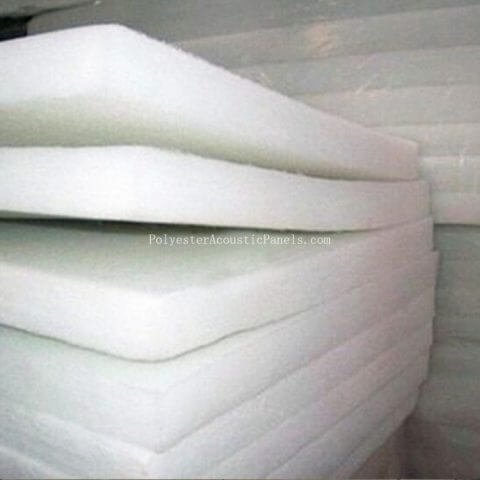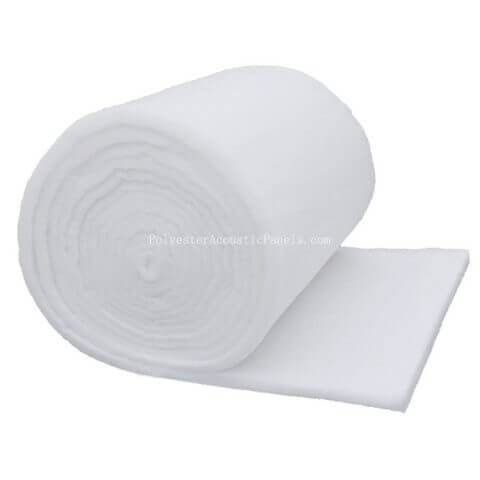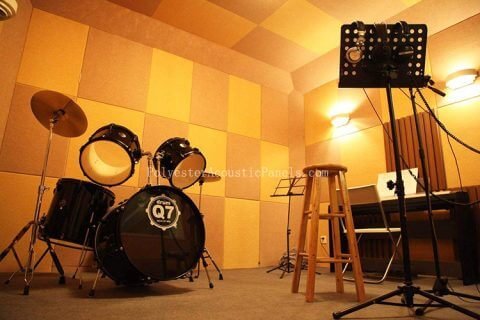Polyester Acoustic Panels Manufacturer
Noise Insulation Panels
Although installing the acoustic acoustic sound insulation wool is a fairly simple process, there are some things to be aware of wherever you install the acoustic noise insulation material. The first and most important thing is to ensure that each gap of the cavity is filled so that there are no gaps. The sound is like water, acoustic polyester insulation will be found and leaked in your structure. Therefore, even small gaps can affect acoustic performance.
Secondly, when installing a polyester insulation nonwoven panel between the stud/bearing and then covering it with a layer of gypsum board, it is recommended to use a resilient mount to install the gypsum board. Although you have installed the acoustic acoustic sound insulation batts into the cavity to reduce the airborne sound through the structure, there is still a percussion sound that passes through the joists/studs. Especially pronounced when soundproofing between floors. Impact noise can be reduced by installing a gypsum board with a flexible bracket.
A typical elastomeric plasterboard installation for separating the plasterboard from the wall/floor/ceiling structure.
Raw materials: 100% polyester fiber
Thickness: 20, 30, 40, 50mm, etc.
Density: 10K, 20K, 30K, etc.
Roll and panel width: 600x1200mm, etc

How to choose the right noise insulation panels for you
Check the acoustic polyester insulation batt size requirements: The first step in choosing the right acoustic insulation for your project is to check the cavity depth and stud width you are using. The stud width is typically 430mm, 580mm or 600mm. Between the two layers, the cavity depth can be any depth between 50 mm and several hundred mm.
Decide which material you prefer, glass wool or polyester wool: no protruding material can achieve better acoustics because the acoustic properties of the batt depend primarily on its density and thickness, as well as a smaller degree of batt construction. However, since all shots are made in the same way, this is not a consideration. This decision usually comes down to personal preferences and budget. In general, glass wool is usually cheaper than polyester noise insulation panel, but not always.
Select the highest quality of the available chamber: the better the quality of the chamber, the better the sound insulation if all conditions are the same. Therefore, when choosing acoustic acoustic polyester insulation batt, you need to choose the highest quality batt for your cavity, and of course your budget. Usually, you can find the density of a specific batt from the bag or ask the salesperson. Common density is 11kg / m3, 14kg / m3, 20kg / m3 and 25kg / m3. This is the case now. Just because one weighs 11 kilograms and the next one is 14 kilograms, don’t immediately assume that 14 kilograms is acoustically better, because this is the quality we care about rather than the density. The 11 kg / 75 mm batting has better acoustic performance than the 14 kg / 50 mm batting. To compare performance, divide the density by 100 and multiply the thickness to find the amount of fiber per square meter. Therefore, 11kg / 100 times 75 = 825, and 14kg / 100 times 50 = 700, so the 11kg / 50mm batting will have greater quality.
In Conclusion:
I hope that you now have a good understanding of noise insulation materials in order to make informed purchasing decisions and get the best products for your project. However, if you need help deciding on the best product for your project, or if you want to offer a free quote for any of the acoustic sound insulation materials we’ve discussed, just click the contact us button below. We are very happy to help.





